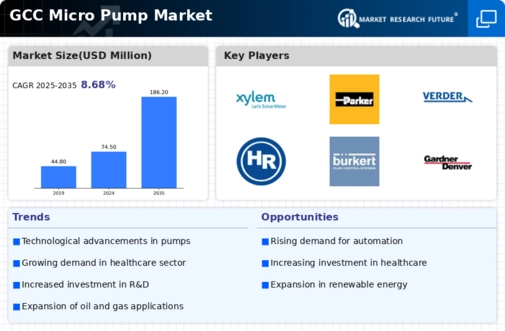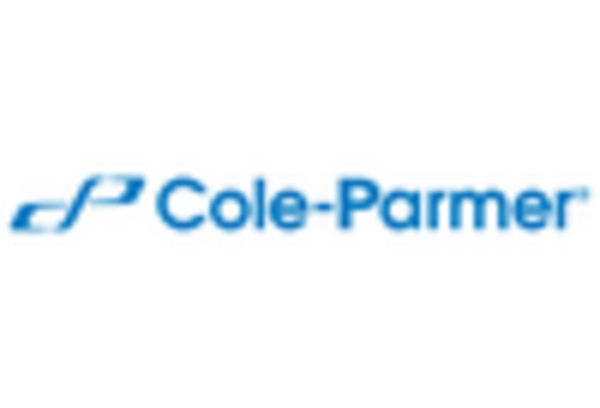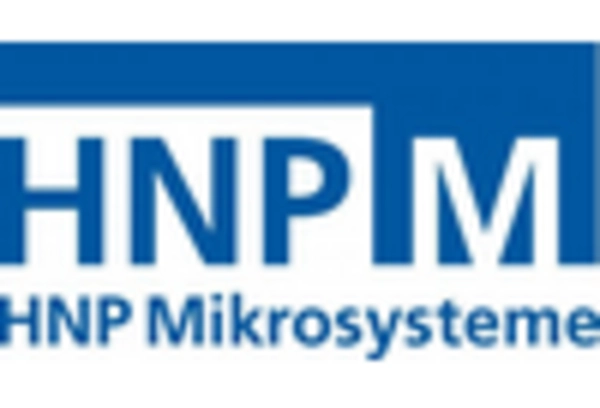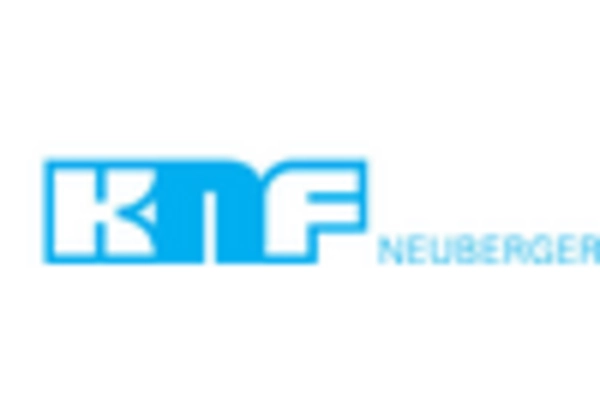Advancements in Medical Devices
The micro pump market is experiencing growth due to advancements in medical devices, particularly in the GCC healthcare sector. The increasing adoption of wearable medical devices and home healthcare solutions is driving the demand for micro pumps, which are essential for drug delivery and monitoring systems. As healthcare providers focus on improving patient outcomes, the need for innovative and reliable micro pump solutions is becoming more pronounced. The GCC medical device market is projected to reach $10 billion by 2025, indicating a robust opportunity for the micro pump market to expand its presence in this rapidly evolving sector.
Increasing Industrial Automation
The micro pump market is experiencing a notable surge due to the increasing trend of industrial automation across various sectors in the GCC. As industries strive for enhanced efficiency and reduced operational costs, the demand for precise fluid control solutions is rising. Micro pumps, known for their accuracy and reliability, are becoming integral in automated systems, particularly in manufacturing and chemical processing. The GCC region is witnessing substantial investments in automation technologies, which is projected to drive the micro pump market's growth. According to recent estimates, the industrial automation sector in the GCC is expected to grow at a CAGR of approximately 8% over the next five years, further bolstering the micro pump market as companies seek to optimize their processes.
Growth in Water Management Solutions
The micro pump market is poised for growth due to the increasing emphasis on water management solutions in the GCC. As water scarcity becomes a pressing issue, there is a growing need for efficient water distribution and irrigation systems. Micro pumps are essential in these applications, providing precise control over water flow and ensuring optimal resource utilization. The GCC governments are investing in sustainable water management projects, which is expected to drive the demand for micro pumps. Recent reports suggest that the water management market in the GCC could reach $20 billion by 2027, indicating a substantial opportunity for the micro pump market to contribute to sustainable practices and technological advancements.
Rising Demand for Precision Agriculture
The micro pump market is benefiting from the rising demand for precision agriculture in the GCC. As agricultural practices evolve, there is an increasing need for efficient irrigation systems that optimize water usage and enhance crop yields. Micro pumps are integral to precision irrigation systems, allowing for targeted water application based on real-time data. The GCC region is investing in smart agriculture technologies, which is likely to drive the micro pump market's growth. It is estimated that the precision agriculture market in the GCC will grow at a CAGR of around 10% over the next five years, creating a favorable environment for the micro pump market to thrive.
Expansion of Pharmaceutical Manufacturing
The micro pump market is significantly influenced by the expansion of pharmaceutical manufacturing in the GCC. With the region's increasing focus on developing a robust healthcare infrastructure, pharmaceutical companies are investing heavily in advanced manufacturing technologies. Micro pumps play a crucial role in drug formulation and delivery systems, ensuring precise dosing and enhanced patient safety. The GCC pharmaceutical market is projected to reach a value of $30 billion by 2026, indicating a strong demand for micro pumps in this sector. This growth is likely to be driven by the rising prevalence of chronic diseases and the need for innovative drug delivery methods, positioning the micro pump market favorably for future expansion.

















Leave a Comment